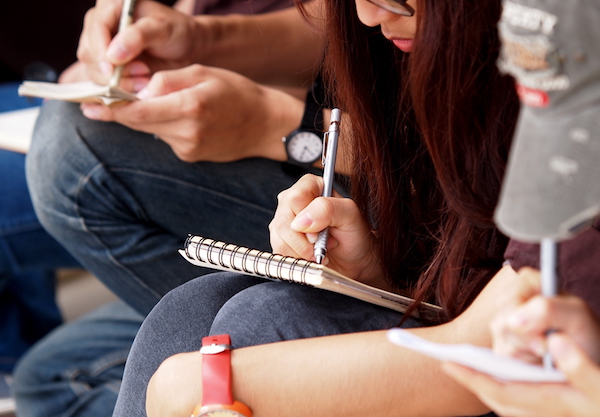How to Take Better Notes
By Amy Jacques
October 2019
A 2014 study in Sage Journals says students who took notes on a laptop were more likely to copy down what a professor said word-for-word. “This actually impaired their learning because their brains were processing the information shallowly, instead of taking larger concepts and condensing them into note-form,” according to a Quartz article. And a 2010 study in the Journal of Information Systems Education says that those who bring their laptops to class are working on relevant material 58 percent of the time, meaning they were less likely to take good notes.
There are a few key things to look out for when note-taking. First, if the speaker has mentioned the same fact or piece of information more than once, then write it down. Also look out for phrases like “This is critical” or “Note this,” and nonverbal cues like pointing, gesturing or a knowing glance.
After the event, review your notes. This is especially significant during the first 24 hours to keep the message fresh in your mind. Review a little bit each day so that the information sticks, according to a piece in CollegeInfoGeek.com.
There are also several different methods you can try — each of these can be effective, but only one may be right for you. The classic outline method involves selecting a few main points that will be covered, then listing more detailed subpoints below. With the Cornell Method, you divide your paper into three sections — notes, cues and summary — then include overarching questions and a summary of the session. A “mind map” is a way of explaining how certain topics relate and is a great way to detail abstract ideas or complex, interlocking topics. Another method is “flow notes,” where you jot down topics, draw arrows, and make doodles and diagrams.
Here are a few takeaways to remember when recording your thoughts during a presentation, lecture or event.
- Take complete notes.
- Include lots of details.
- Look for note-taking cues.
- Revise your notes.
- Replay lectures.
- Write your notes by hand.



